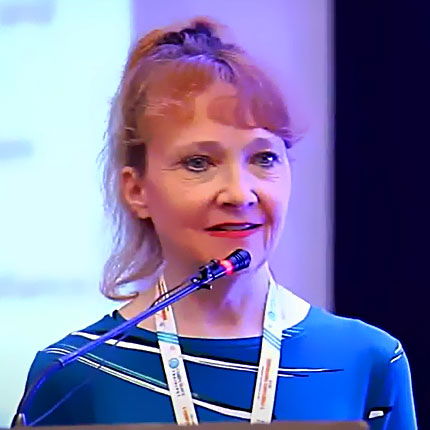3-Hour Virtual Seminar on Computer System Validation (CSV) vs Computer Software Assurance (CSA) - Following a Waterfall vs Agile Methodology
Faculty: Carolyn Troiano | Code: FDB3148
- Date:10/17/2023 11:00 AM - 10/17/2023 02:00 PM
- Time zone: Eastern Time (US/Canada) Online Event
Description
Seminar Agenda:
- Learn how to identify “GxP” Systems
- Learn about FDA’s current thinking about technology and software development, and how this will impact industry
- Discuss the current state of Computer System Validation (CSV) approach based on FDA requirements
- Learn about the System Development Life Cycle (SDLC) approach to validation and how this can be modernized through a more agile approach, including automated testing for continuous validation
- Learn the pros and cons of an Agile vs. Waterfall approach
- We will discuss cloud computing and Software as a Service (SaaS) systems that can be embraced and validated effectively
- Discuss the best practices for documenting computer system validation efforts, whether using a Waterfall or Agile approach, including requirements, design, development, testing and operational maintenance procedures, including ways to improve efficiency and effectiveness of managing related documentation
- Understand how to maintain a system in a validated state through the system’s entire life cycle in a more cost-effective manner, applying an Agile continuous validation approach
- Learn how to assure the integrity of data that supports GxP work, despite changes and advances in new technology
- Discuss the importance of “GxP” documentation that complies with FDA requirements
- Learn about the policies and procedures needed to support your validation process and ongoing maintenance of your systems in a validated state
- Know the regulatory influences that lead to FDA’s current thinking at any given time
- Finally, understand the industry best practices that will enable you to optimize your approach to validation and compliance, based on risk assessment, to ensure data integrity is maintained throughout the entire data life cycle
About Seminar:
As part of the Case for Quality program US FDA Center for Devices and Radiological Health noted how an excessive focus by industry on compliance rather than quality may be diverting resources and management attention toward meeting regulatory compliance requirements vs. adopting best quality practices. There has also been a lower than anticipated investment in automation and digital technologies, which could greatly improve quality and process control. A key element is a risk-based, product quality and patient-centric approach to Computer System Assurance (CSA) vs. the traditional Computer System Validation (CSV) Waterfall approach. This encourages critical thinking based on product and process knowledge and quality risk management over prescriptive documentation driven approaches.
This is where FDA determined that “WHAT” is required can be done (the “HOW”) in different ways and does not have to be according to the “checklist” mindset of most CSV work, where you crank out documents without specifically addressing the risk of potential failure of each requirement.
GAMP5 supports the use of incremental, iterative, and evolutionary approaches including Agile, for development of custom applications. Keys to success include a robust Quality Management System and well trained and highly disciplined teams following well-defined processes supported by tools and automation
Advancements in technology have forced organizations to rethink business models. Once controlled and orderly, these organizations are now more chaotic and complex, serving patients and customers that are better informed and with higher expectations than ever before. Work practices and tools must change to meet these challenges.
The approach to developing software, performing validation and maintaining a system in a validated state through its entire life cycle should be carefully considered in order to meet changing needs. This webinar will include a comparison of the Agile and Waterfall methodologies, along with the pros and cons of each. There may not be one size that fits all, and so it is important to understand what needs to be considered when making such a determination.
Why Should You Attend:
The attendee will learn about FDA’s approach to modernizing technology, and how that will benefit both the Agency and industry. We will discuss ways to modernize the System Development Life Cycle (SDLC) approach to Computer System Validation (CSV) by using automated testing tools that will result in a continuous validation of software products. This approach is amenable to the Agile software development methodology, which can be adapted for use in validation.
We will also discuss the important aspects of CSV and how to apply them in a new and modern technological environment.
Who Should Attend:
- Information Technology Analysts
- Information Technology Developers and Testers
- Software Quality Assurance Professionals
- QC/QA Managers and Analysts
- Analytical Chemists
- Compliance and Audit Managers
- Laboratory Managers
- Automation Analysts
- Manufacturing Specialists and Managers
- Supply Chain Specialists and Managers
- Regulatory Affairs Specialists
- Specialists
- Risk Management Professionals
- Clinical Data Analysts
- Clinical Data Managers
- Clinical Trial Sponsors
- Computer System Validation Specialists
- GMP Training Specialists
- Business Stakeholders/Subject Matter Experts
- Business System/Application Testers
- Vendors responsible for software development, testing and maintenance
- Vendors and consultants working in the life sciences industry who are involved in computer system implementation, validation and compliance
Course Director: Carolyn Troiano
 | Carolyn Troiano has more than 30 years of experience in computer system validation in the pharmaceutical, medical device, animal health, tobacco and other FDA-regulated industries. She is currently an independent consultant, advising companies on computer system validation and large-scale IT system implementation projects. During her career, Carolyn worked directly, or on a consulting basis, for many of the larger pharmaceutical companies in the US and Europe. She developed validation programs and strategies back in the mid-1980s, when the first FDA guidebook was published on the subject, and collaborated with FDA and other industry representatives on 21 CFR Part 11, the FDA’s electronic record/electronic signature regulation. Carolyn has participated in industry conferences. She is currently active in the PMI, AITP, and RichTech, and volunteers for the PMI’s Educational Fund as a project management instructor for non-profit organizations. |